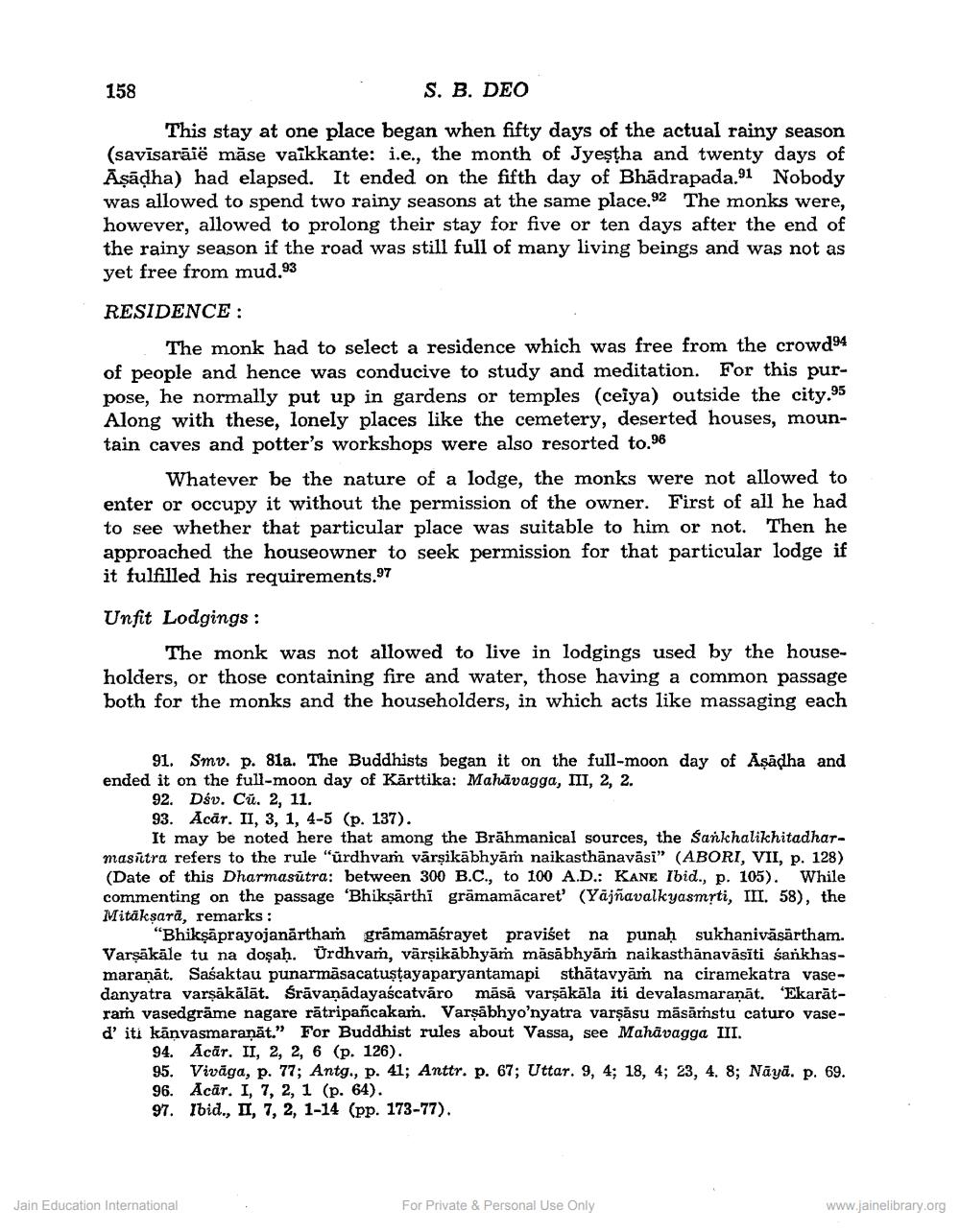________________
158
S. B. DEO
This stay at one place began when fifty days of the actual rainy season (savisarāië māse vaikkante: i.e., the month of Jyeștha and twenty days of Aşādha) had elapsed. It ended on the fifth day of Bhādrapada.91 Nobody was allowed to spend two rainy seasons at the same place.92 The monks were, however, allowed to prolong their stay for five or ten days after the end of the rainy season if the road was still full of many living beings and was not as yet free from mud.93 RESIDENCE:
The monk had to select a residence which was free from the crowd94 of people and hence was conducive to study and meditation. For this purpose, he normally put up in gardens or temples (ceiya) outside the city.95 Along with these, lonely places like the cemetery, deserted houses, mountain caves and potter's workshops were also resorted to.96
Whatever be the nature of a lodge, the monks were not allowed to enter or occupy it without the permission of the owner. First of all he had to see whether that particular place was suitable to him or not. Then he approached the houseowner to seek permission for that particular lodge if it fulfilled his requirements.97
Unfit Lodgings :
The monk was not allowed to live in lodgings used by the householders, or those containing fire and water, those having a common passage both for the monks and the householders, in which acts like massaging each
91. Smv. p. 81a. The Buddhists began it on the full-moon day of Aşadha and ended it on the full-moon day of Kārttika: Mahāvagga, III, 2, 2.
92. Dév. Cú. 2, 11. 93. Acār. II, 3, 1, 4-5 (p. 137).
It may be noted here that among the Brāhmanical sources, the Sankhalikhitadharmasitra refers to the rule "ürdhvam vārşikābhyām naikasthānavāsi" (ABORI, VII, p. 128) (Date of this Dharmasútra: between 300 B.C., to 100 A.D.: KANE Ibid., p. 105). While commenting on the passage 'Bhikṣārthi grāmamācaret (Yajñavalkyasmrti, III, 58), the Mitäksara, remarks:
"Bhiksāprayojanartham grāmamāśrayet praviśet na punah sukhanivāsärtham. Varşākāle tu na dosah. Urdhvam, vārşikābhyām māsābhyām naikasthānavāsīti sankhasmaraņāt. Sasaktau punarmāsacatustayaparyantamapi sthātavyām na ciramekatra vasedanyatra varsäkālāt. Srāvanadayaścatváro māsā varsākāla iti devalasmaranāt. 'Ekarātram vasedgrame nagare rātripancakarn. Varşabhyo'nyatra varsāsu māsāṁstu caturo vased'iti kānvasmaranāt." For Buddhist rules about Vassa, see Mahāvagga III.
94. Acār. II, 2, 2, 6 (p. 126). 95. Viāga, p. 77; Antg., p. 41; Amttr. p. 67; Uttar. 9, 4; 18, 4; 23, 4, 8; Nāgā. p. 69. 96. Acār. I, 7, 2, 1 (p. 64). 97. Ibid., II, 7, 2, 1-14 (pp. 173-77).
Jain Education International
For Private & Personal Use Only
www.jainelibrary.org




